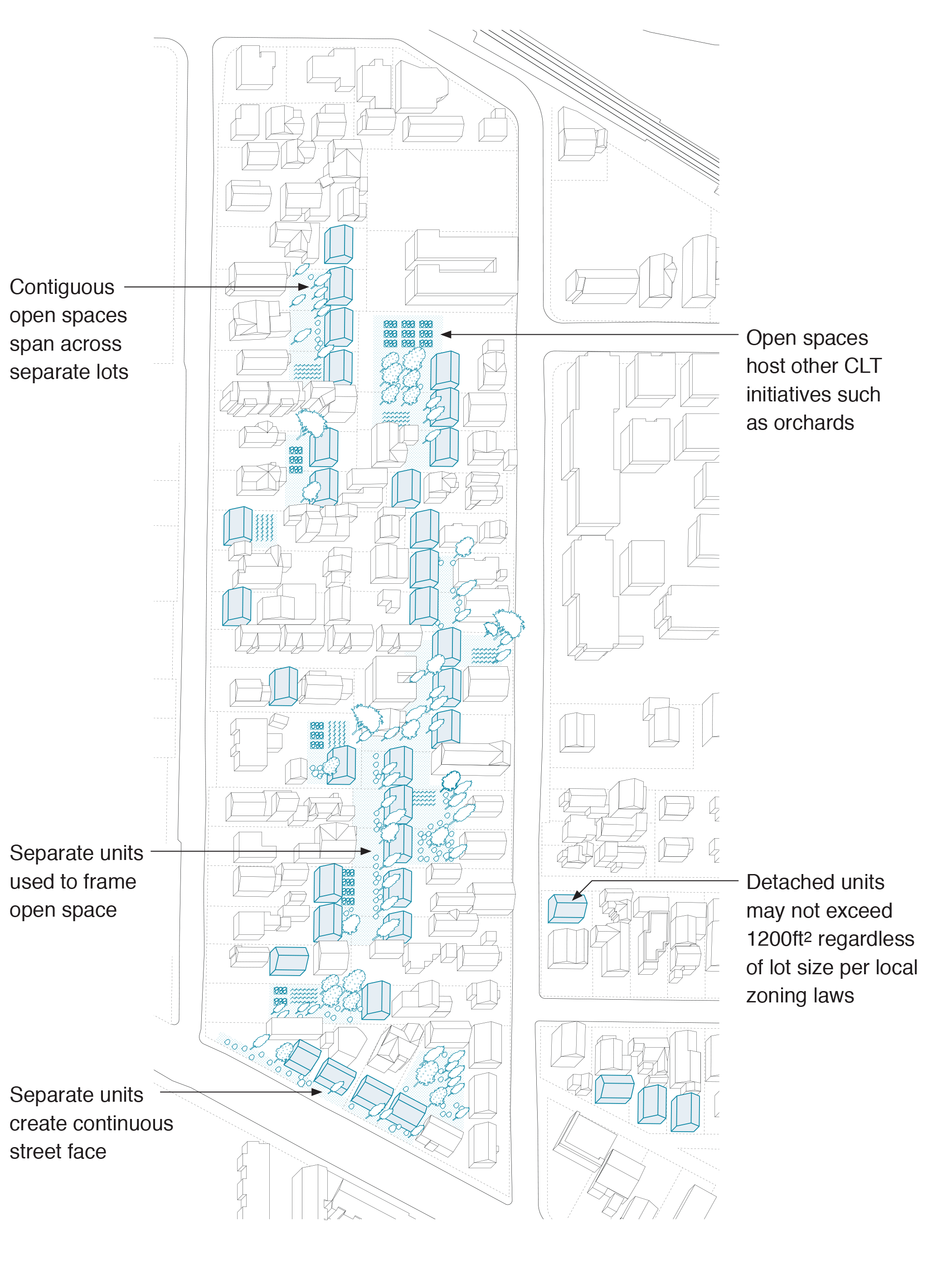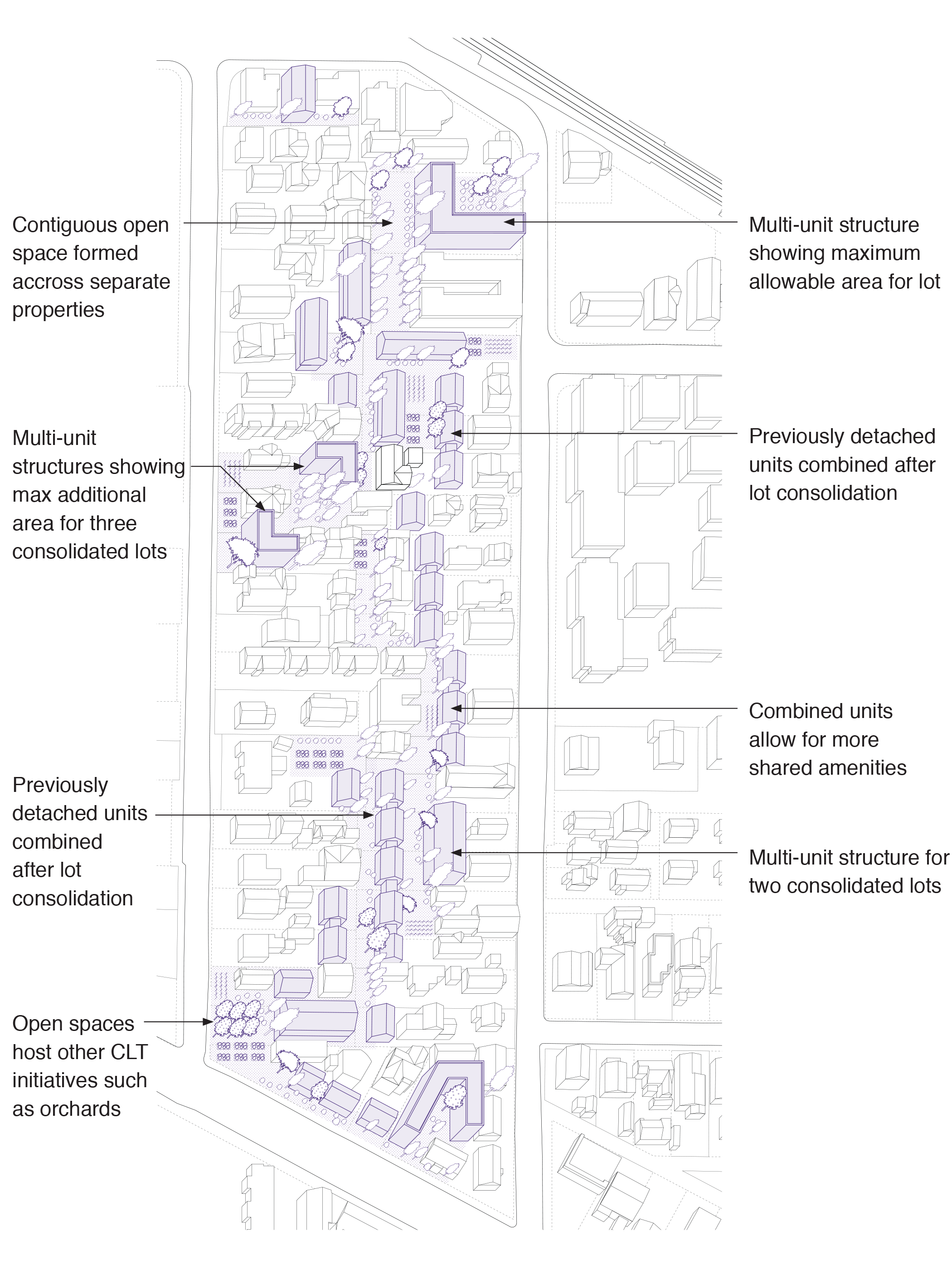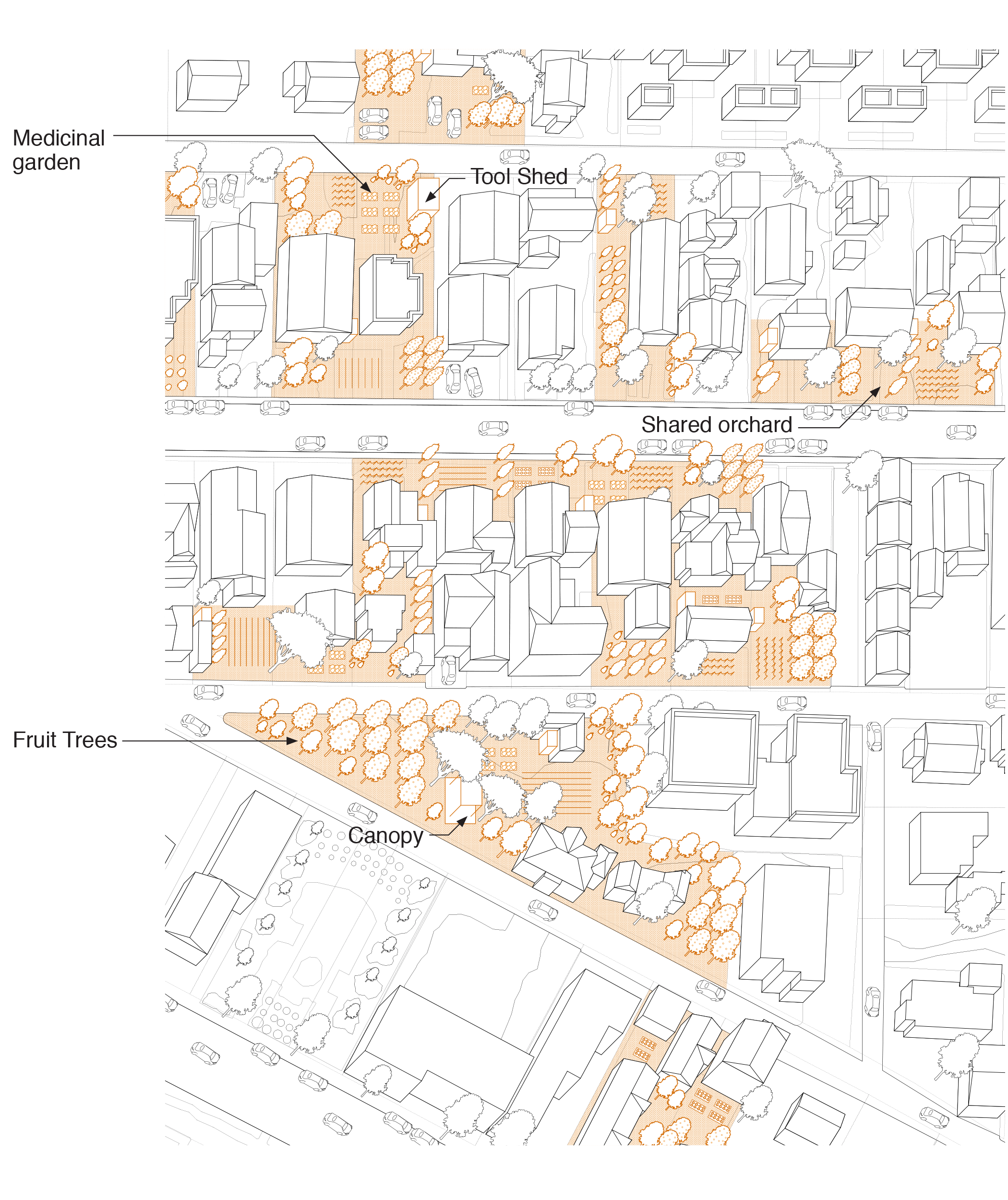As these cooperative endeavors take hold in the neighborhood, they begin the slow work of transformation. From within an existing urban structure and without displacing residents, a new patchwork landscape emerges, knitting together dwelling, food production, building, and community. These new relationships can be read in space, as private lots become sites of cooperative labor and as the CLT encourages neighbors to take down fences and work together to create a more densely inhabited and productive neighborhood.
Central to this is a density strategy that stands against typical models of development. San Ysidro is characterized by a mix of single-family homes and multi-family dwellings. The neighborhood is largely gridded, and parcels tend to include generous front and back yards with enough space for the construction of a free-standing accessory unit. CLT’s have the ability to build new housing stock, but construction requires capital, and CLT’s are typically quite resource-poor organizations. However, in the case of San Ysidro, if the CLT were to use a rammed earth job-training program to build unit additions on the properties of CLT members, the density of the neighborhood could double without causing displacement in the community, and without changing the zoning.

Furthermore, if a CLT owns two adjacent parcels, it becomes possible to ask the city for a lot-consolidation, which would ultimately allow for even higher density.

This densification strategy operates alongside the community planting strategy, which over time would fill the neighborhood with orchards and native species gardens. Overtime, the parcel structure dominant in single-family residential zoning is blurred into a heterogeneous patchwork of productive landscapes, gardens, and dwellings.
